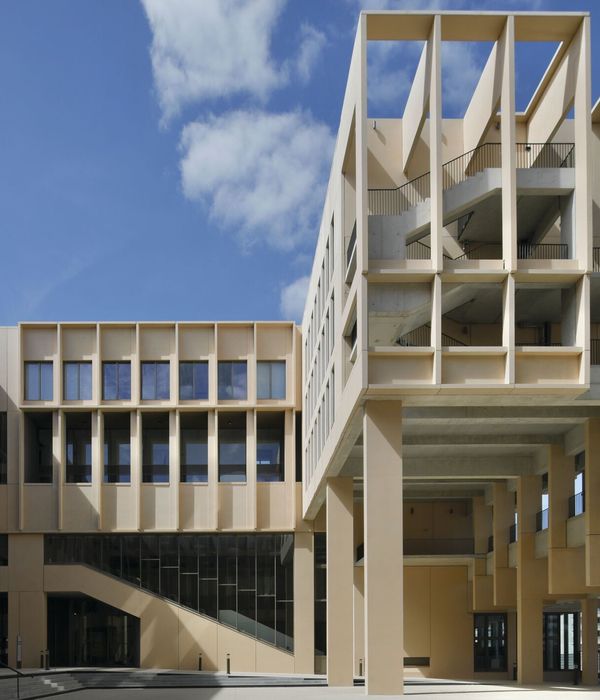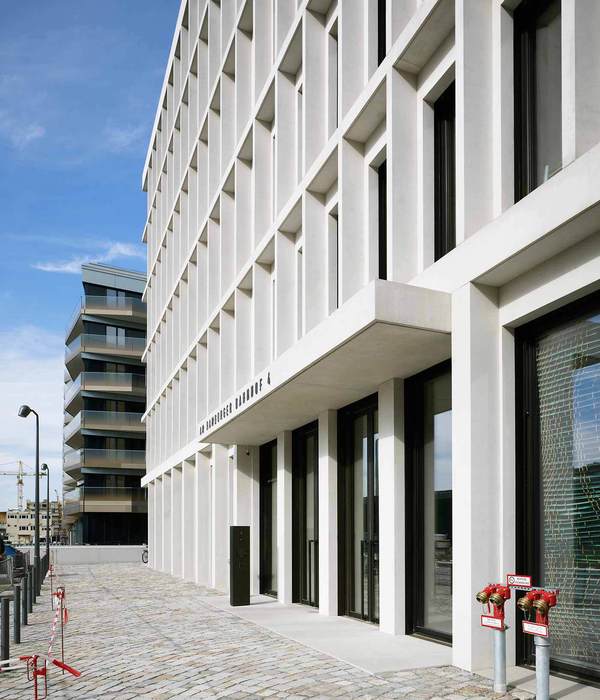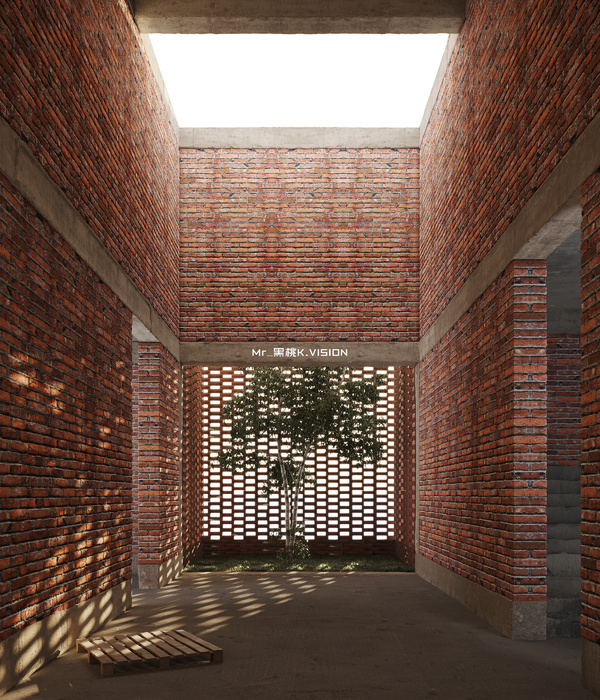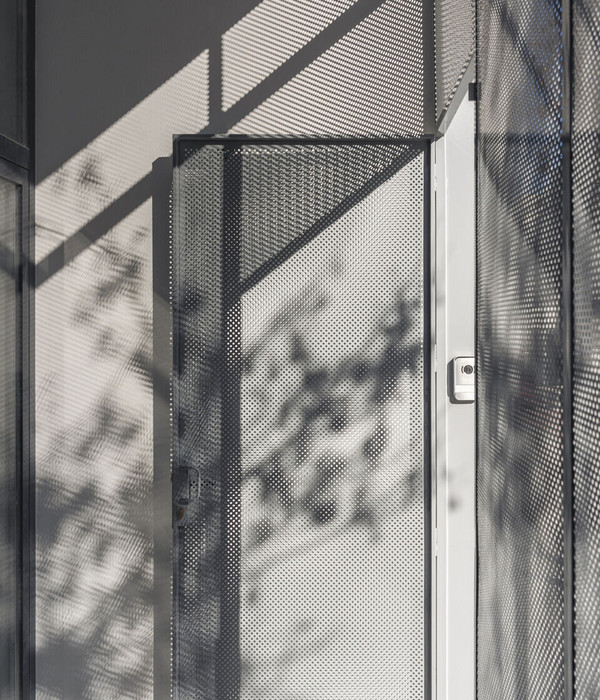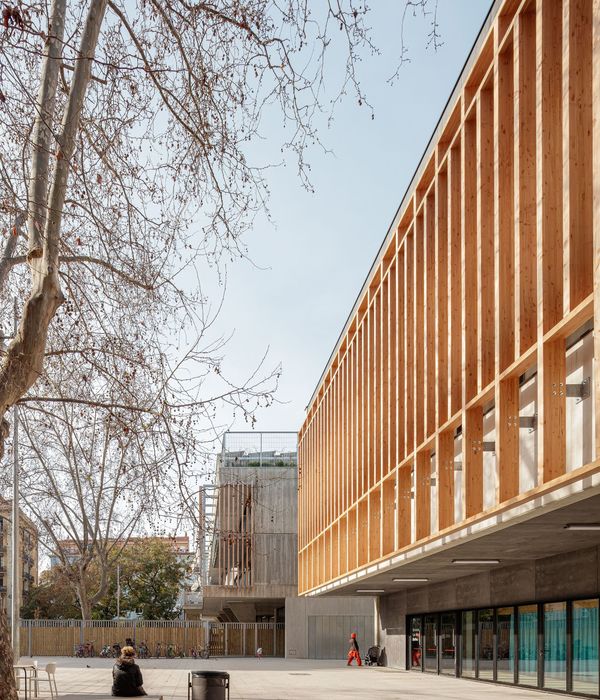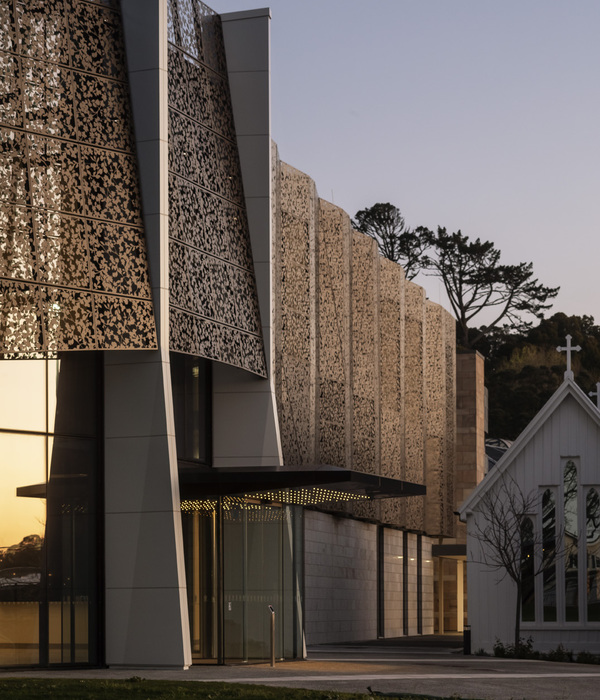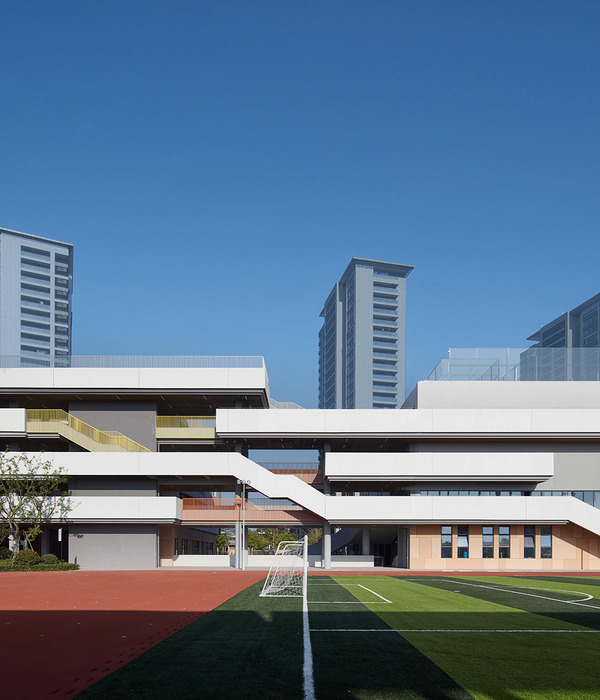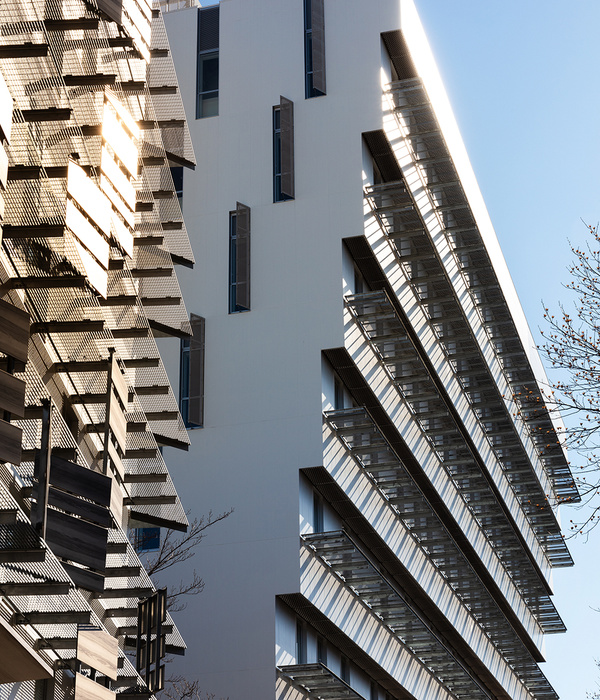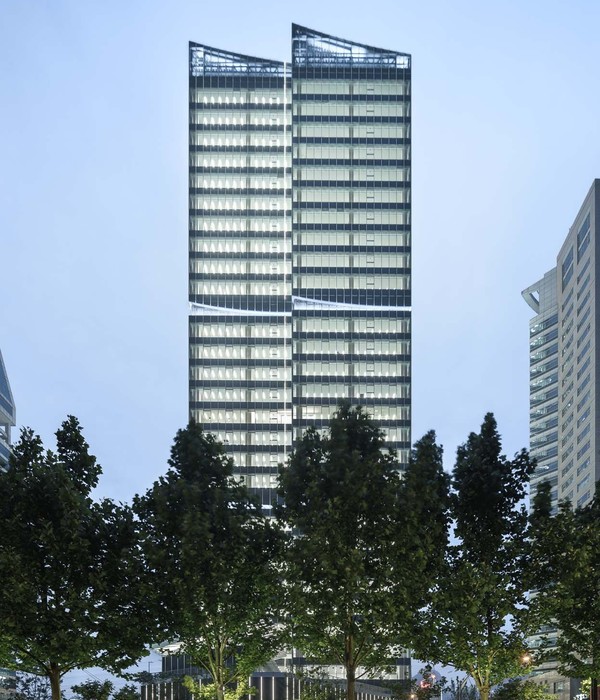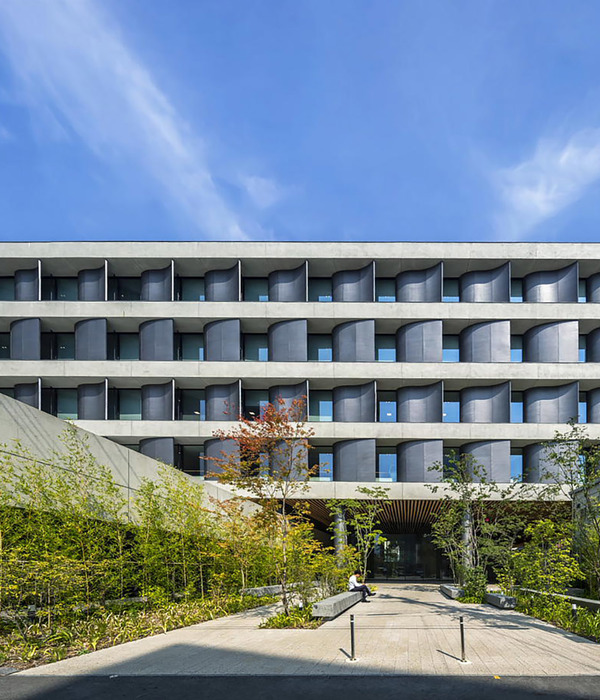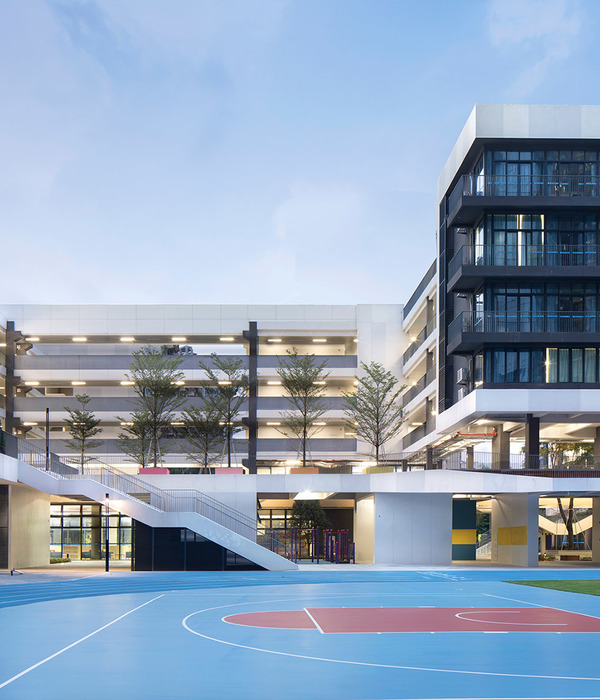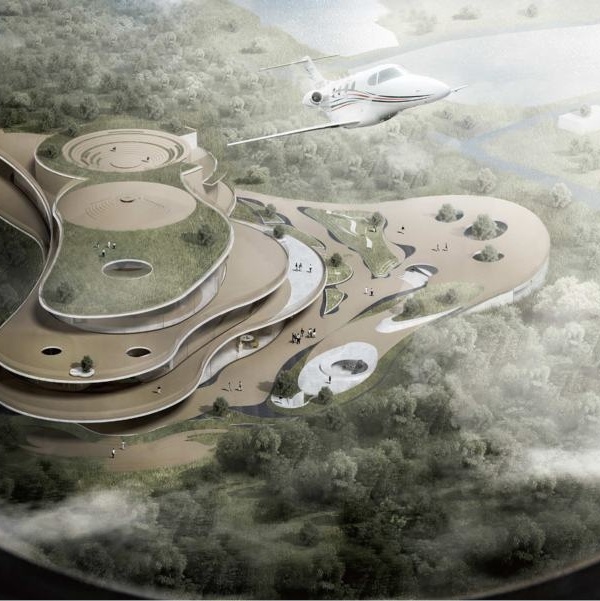这座消防站形态简洁,仅仅包含了一个大尺寸超大车库和居住空间。最复杂的时候,它彰显了社区的价值观,同时也是一个用于应急响应的高技机器。我们在设计过程中充分考虑了这一点,并将其融入到故事讲述和环境氛围中。76 号消防站将火作为保护和美丽的象征,同时在体量和材料上反映了其乡村环境。该设计从当地的农业建筑中汲取灵感,在独特的生活和工作功能之上融入该地区微妙的乡村特色。
▼建筑概览,building overview © Josh Partee
▼北侧视角,view from the north © Josh Partee
建筑占地10120平方英尺,由两部分组成:拱形金属外壳的器械仓库和用烧杉板覆盖的办公生活区。器械仓库内停放着应急车辆,还包括车间、燃料齿轮清洗和储藏室以及急救室等工作空间。附属的生活区为工作人员提供了日间活动室、厨房、健身室、淋浴室、储物柜和宿舍间。在生活区的正面入口处有一个公共接待区,包括办公室、会议室和地区行政办公区。
The 10,120-square-foot structure comprises two masses: a vaulted apparatus bay clad with metal and an office and living quarters wrapped in charred wood. The apparatus bay houses the emergency response vehicles as well as includes working spaces such as a shop, bunker gear washer and storage, and an EMS room. Attached, the living quarters houses the crew and provides a day room, kitchen, fitness room, showers, lockers, and bunk rooms. An area for public reception, including the station office, conference room, and District administrative office space, is located at the front entry to the living quarters.
▼从东侧看居住区,Living quarters from the east © Josh Partee
▼从南侧看居住区,Living quarters from the south © Josh Partee
▼室外门廊,Exterior porch © Josh Partee
烧杉板是一种传统日本技术,将木材表面炭化烧焦,以防止腐烂、朽坏和虫蛀。温暖的西部红松木包裹着门廊,置入在生活体量之中,与旁边的烧杉板形成丰富的对比。红松木一直延伸到日光充足的建筑内部,使建筑内外融为一体。轻金属包裹着器械仓库外部,而胶合木都铎式拱门上面横跨榫槽接合板,庇护着室内的消防车。
Shou Sugi Ban, a traditional Japanese technique, was used to char the wood surface, providing protection from rot, decay, and insects. Warm western red cedar-clad porches carve into the living quarters, providing a rich comparison for the adjacent charred wood. The cedar continues to the day-light filled building interior, blending inside with outside. A light metal wraps the apparatus bay exterior, while glulam Tudor arches spanned by tongue-and-groove cedar decking vault over the engines at the interior.
▼硬化的黑炭层可以保护木材,The hardened layer of textured black char protects the wood © Josh Partee
▼天然木材紧挨着烧杉板,Natural wood abuts charred wood © Josh Partee
▼设备仓库,Apparatus bay © Josh Partee
▼设备仓库,Apparatus bay © Josh Partee
车站采用了日光采集、被动式太阳能供暖、高性能建筑围护结构、高效机械系统、LED 照明和低流量管道装置。加上屋顶太阳能电池板阵列和备用发电机,这些被动和主动的可持续发展策略为车站的弹性设计做出了贡献。
The station incorporates daylight harvesting, passive solar heating, a high-performance building envelope, an efficient mechanical system, LED lighting, and low-flow plumbing fixtures. Coupled with a rooftop solar panel array and a back-up generator, these passive and active sustainable strategies contribute to the station’s resilient design.
▼日光房间,Dayroom © Josh Partee
▼生活空间概览,living quarter overview © Josh Partee
▼沐浴着自然光线的生活工作空间凸显了温暖的木材色调,
Natural daylight washes the living and working spaces, highlighting warm wood tones © Josh Partee
建筑朝向围绕着东侧门廊和日间活动室,这是工作人员的主要活动场所,其角度可以捕捉到卡斯卡特山脉的美景,而金属表皮的设备仓库则面向道路,向公众展示消防站最显著的特征——消防车。整个消防站使用天然无毒材料,为消防员提供了健康、恢复性的空间,使他们能够在执勤之余恢复体力。
The building orientation rotates with the east porch and dayroom, where crews spend most of their time, angled to capture views of the Cascade mountain range, and the metal-clad apparatus bay facing the road, presenting the most recognizable feature of a fire station – the engines – to the public. Natural, non-toxic materials used throughout provide healthy, restorative spaces for the crew to recharge from active duty.
▼一张刻有76号消防站标志的活边胡桃木桌子,
作为车组人员的中央聚会空间,
A live-edge walnut table, highlighting the station 76 emblem,
serves as a central gathering space for the crew © Josh Partee
▼西北侧夜景,View from the northwest © Josh Partee
▼夜景,Night view © Josh Partee
Hennebery Eddy design team:
Michelle Vo, Principal-in-Charge
Camilla Cok, Project Architect
Ian Gelbrich, Project Manager
Project Team:
Architecture and Interiors: Hennebery Eddy Architects
Contractor: Bremik Construction, Inc.
Civil Engineer: KPFF Consulting Engineers, Inc
Structural Engineer: IMEG Corporation
Mechanical Engineer: Interface Engineering, Inc.
Electrical Engineer: Interface Engineering, Inc.
Landscape: Otten Landscape Architects
Wood Charring: Barnwood Naturals
Cost Consultant: ACC Cost Consultants, LLC
Client: Gresham Fire & Emergency Services, Multnomah Rural Fire Protection District 10
Photography: Josh Partee
{{item.text_origin}}

